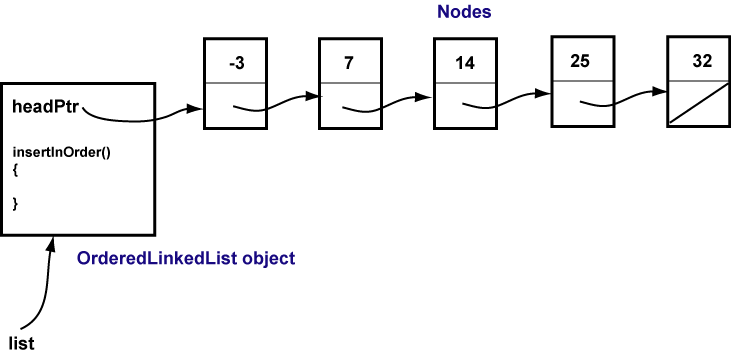No.

The methods of the this chapter's class OrderedLinkedList ensure that the
nodes are linked into ascending order.
The Node class is the same as before.
The picture shows a possible ordered linked list.
Here for review is the Node class, unchanged from the previous chapter:
public class Node
{
private int value;
private Node next;
public Node ( int val )
{
value = val;
next = null;
}
public int getValue() { return value; }
public Node getNext() { return next; }
public void setValue( int val ) { value = val; }
public void setNext( Node nxt ) { next = nxt; }
public String toString() { return "" + value ; }
}
Here is a start on the LinkedList class that contains a
pointer to the first node of a chain of nodes.
The constructor is not really needed since the default constructor would be enough,
but is included here to emphasize that headPtr starts out as null.
// OrderedLinkedList
//
public class OrderedLinkedList
{
private Node headPtr = null;
// The constructor creates an empty list
public OrderedLinkedList()
{
headPtr = null;
}
// Determine if the List is empty
public boolean isEmpty()
{
return headPtr == null;
}
// Traverse the list, printing each node
// (Slightly improved from previous version.)
public void traverse()
{
Node current = headPtr;
while ( current != null )
{
if ( current == headPtr )
System.out.print( current ); // toString method used here
else
System.out.print( ", " + current );
current = current.getNext();
}
}
// Insert one Node containing data
// into the list in ascending order.
// Duplicates are allowed.
public void insertInOrder( int data )
{
Node newNode = new Node( data );
newNode.setNext( null );
// . . . more work to be done . . .
}
}
(Thought Question:) What does an empty OrderedLinkedList look like?